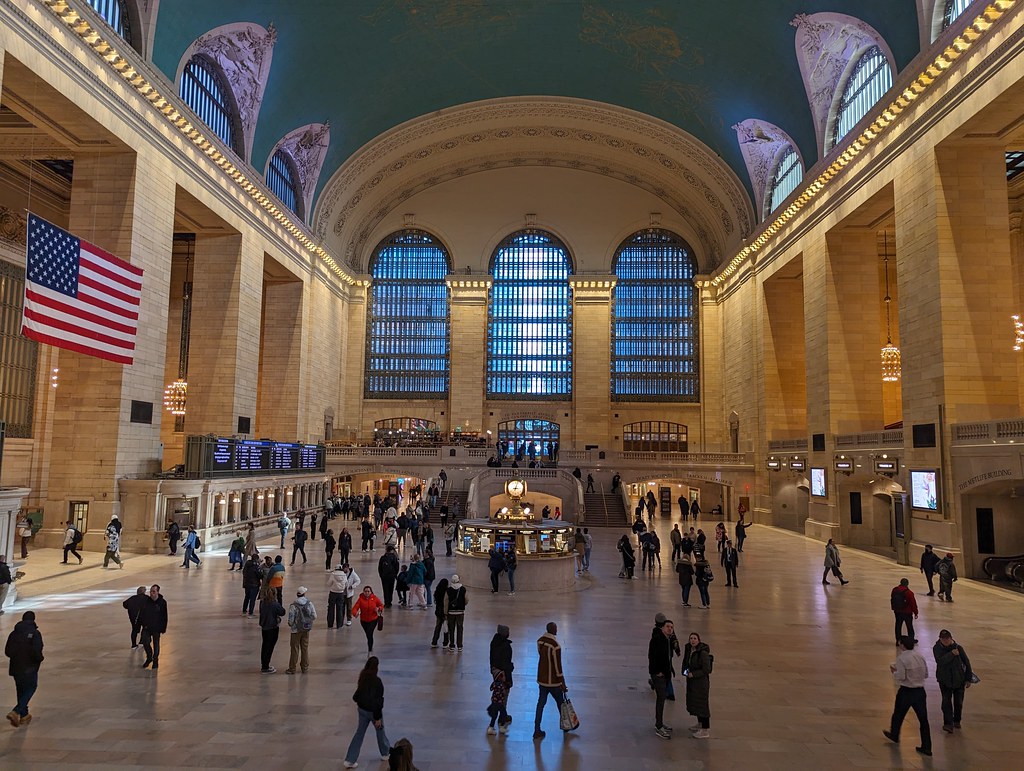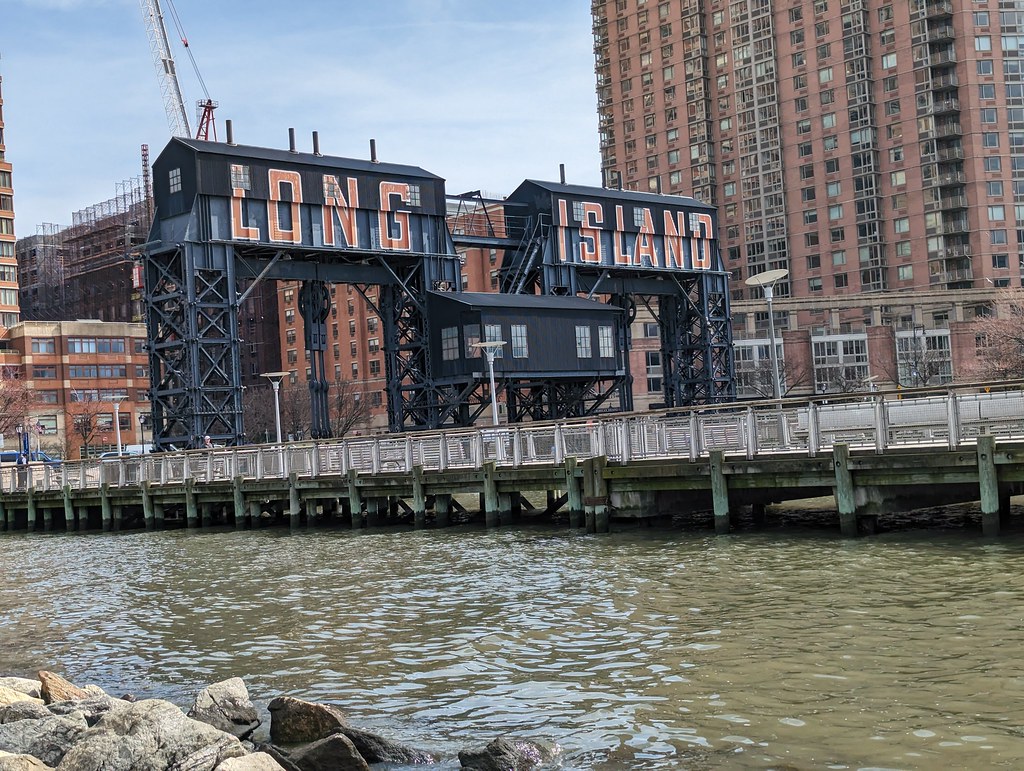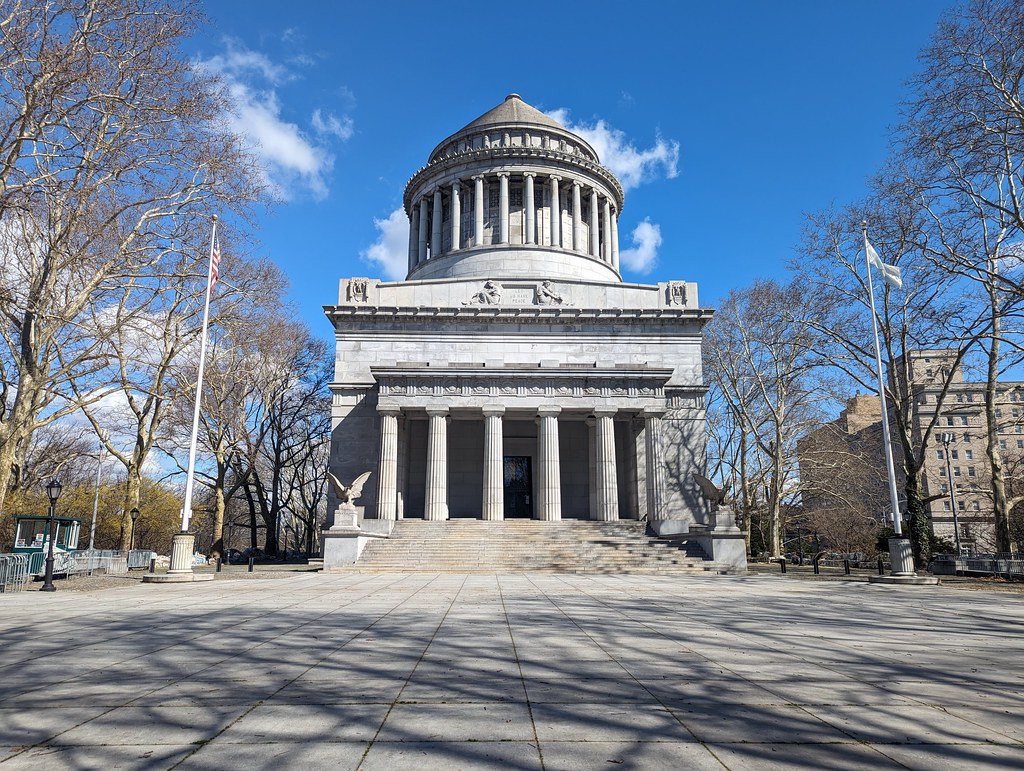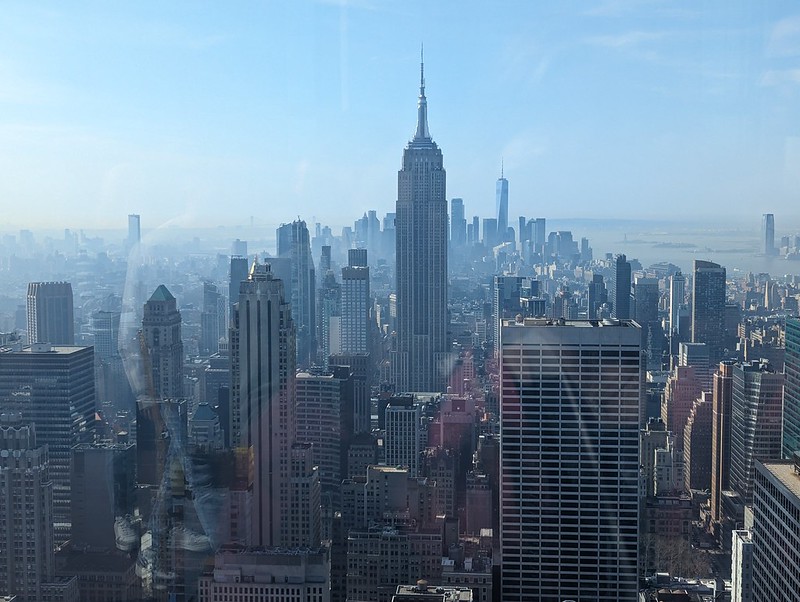We started the day by taking a B train to 81st Street in the Upper West Side, an upscale neighbourhood located west of Central Park.
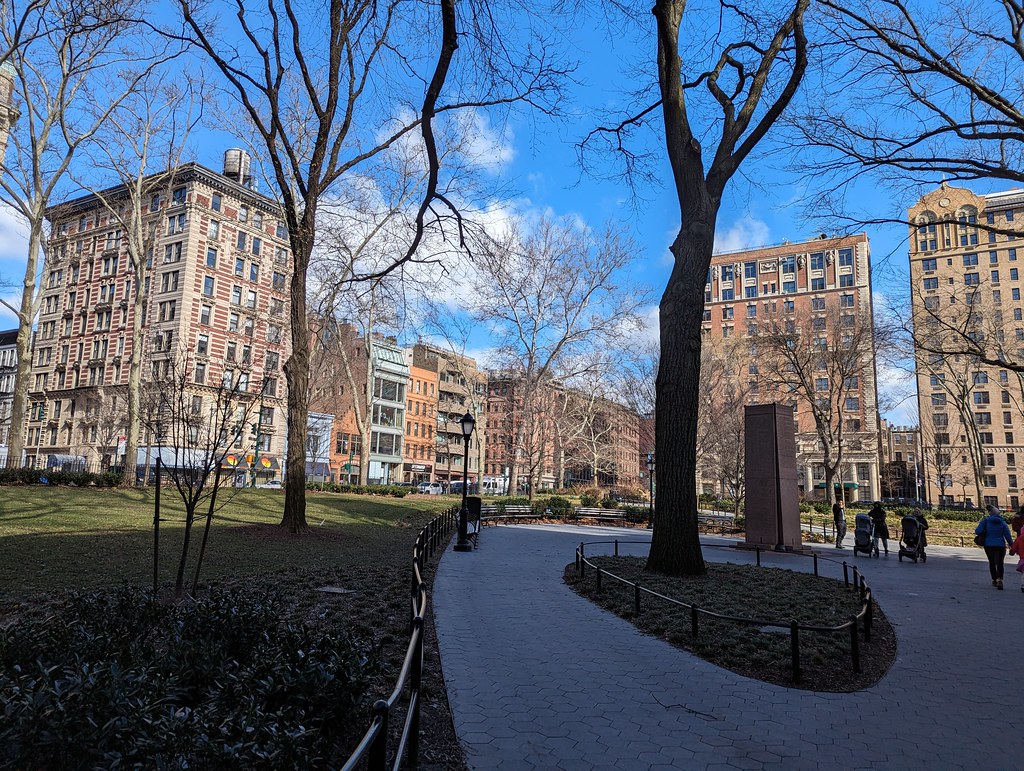
Upper West Side, New York City
This leafy, residential district is categorised by its four and five storey brownstone townhouses built between the late 19th and early 20th century.
American Museum of Natural History
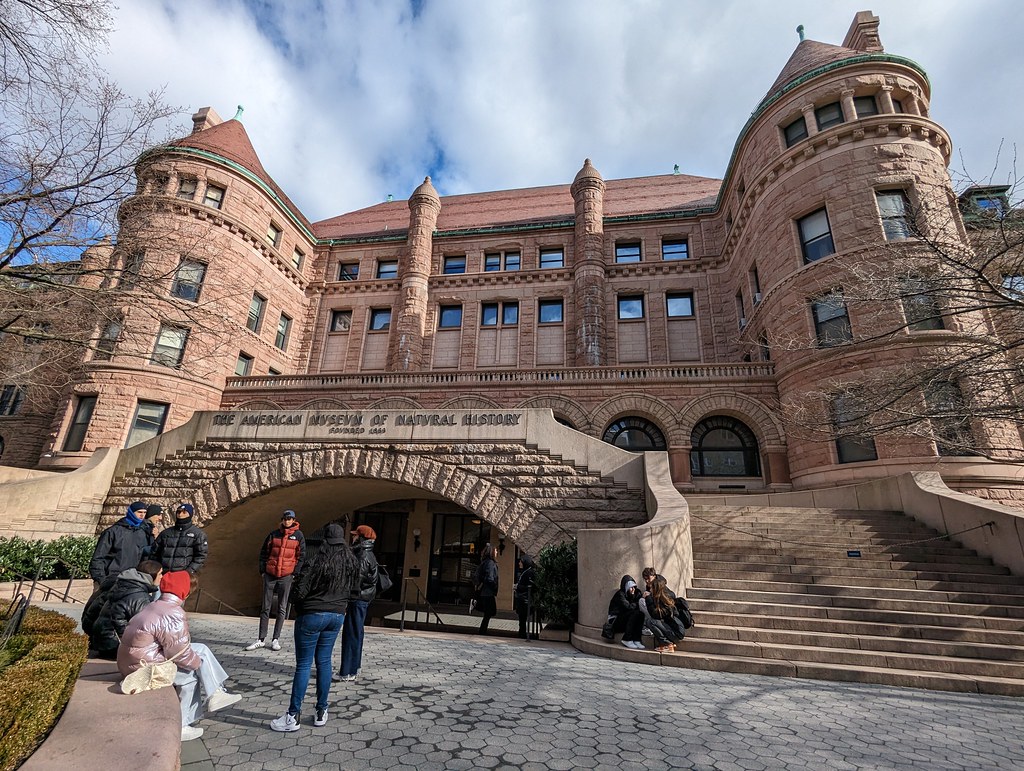
American Museum of Natural History
After popping into a cosy cafe for breakfast pastries and coffees we headed over to the American Museum of Natural History located in the Theodore Roosevelt Park.
The museum occupies a large area and rather than face a lengthy queue at the main entrance I recommend using the rear door at 81st Street/Rose Center entrance as we got in there straightaway.
The CityPASS ticket includes access to the permanent museum halls plus a choice of one timed ticketed exhibition of either the Butterfly Vivarium, Giant Screen Film or the Hayden Planetarium Space Show.
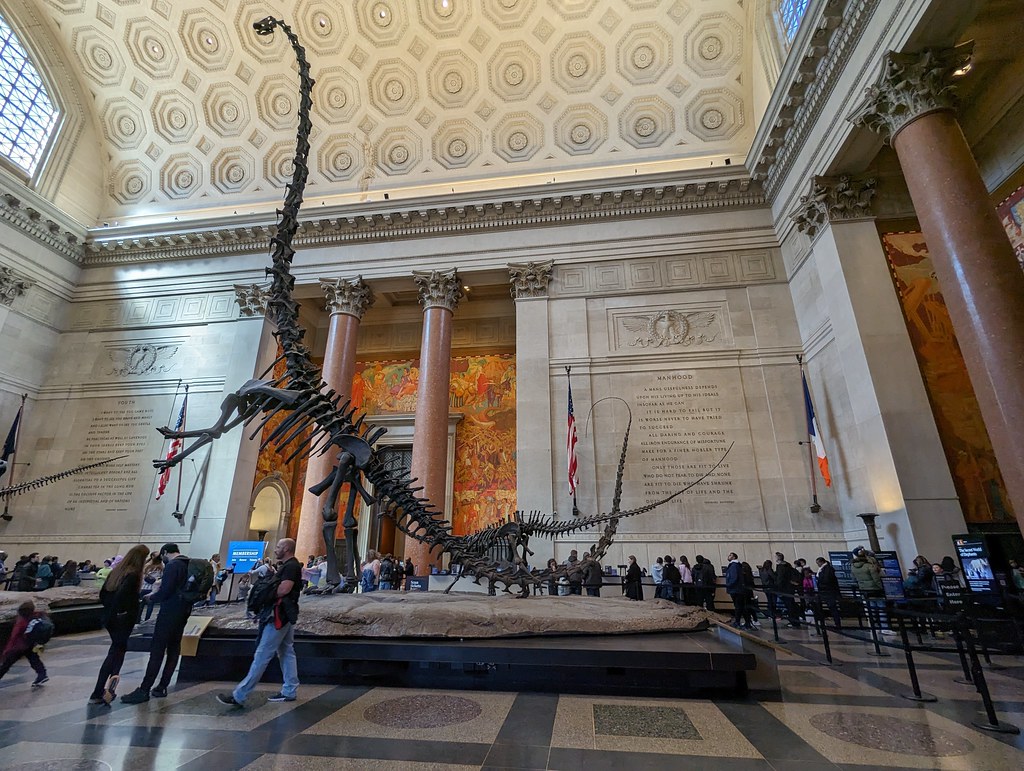
Dinosaur skeleton in the American Museum of Natural History, New York
As the museum is vast with a staggering 34 million artefacts spread across four blocks, 26 buildings and 45 exhibition halls it would be impossible to view all of its galleries in one visit. We opted to focus on earth and space in the Rose Center, dinosaurs and interactive exhibits on the land and sea.
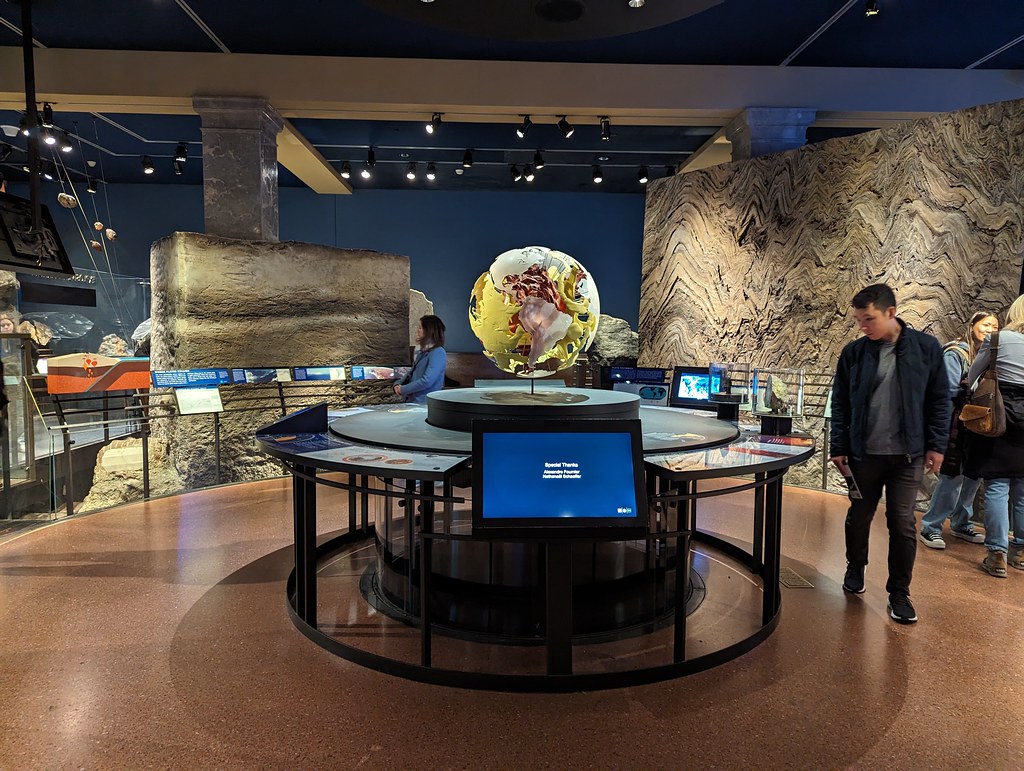
Earth and Space Gallery, American Museum of Natural History, New York
Before leaving we used our timed entry ticket to view Worlds Beyond Earth, an immersive theatre experience relating the story of the dynamic worlds that share our solar system.
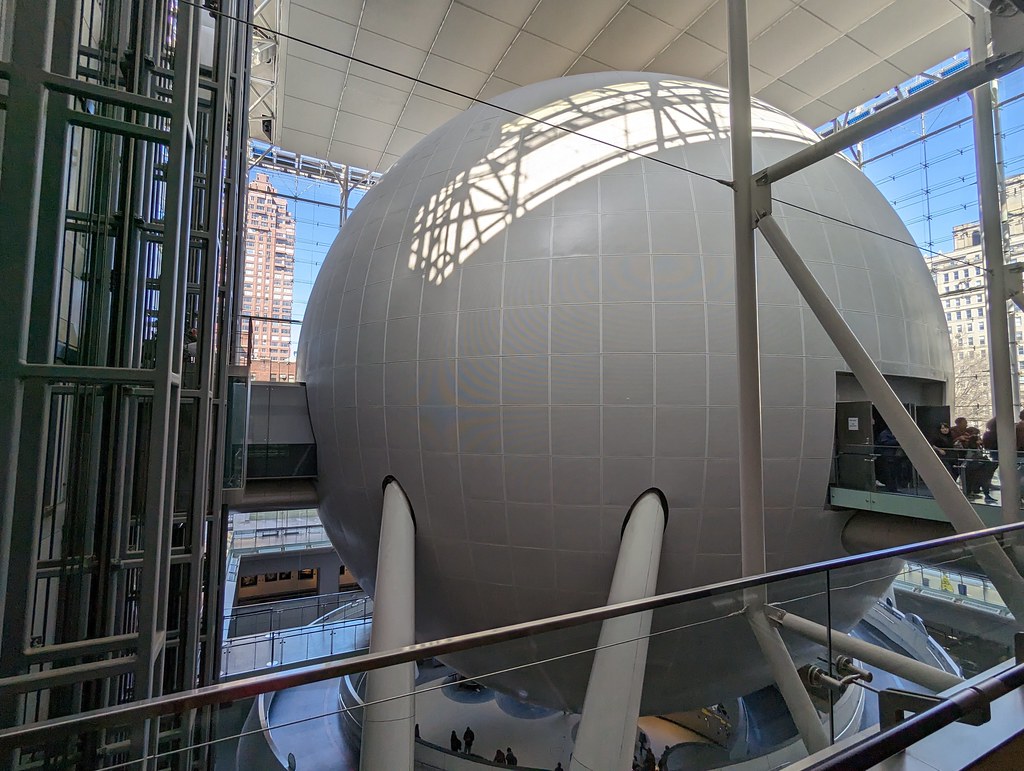
Immersive Theatre, American Museum of Natural History,
The 25 minute film viewed from a giant ceiling screen was both absorbing and educational American Museum of Natural History.
Central Park
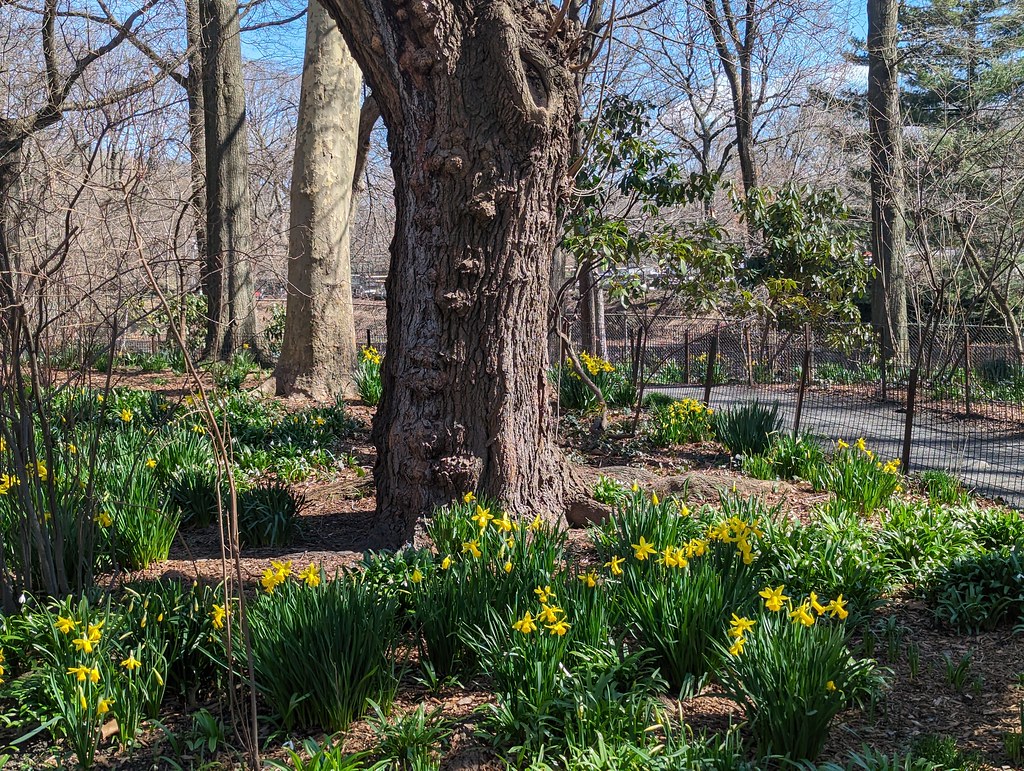
Daffodils inn bloom in Central Park, New York
We then crossed the road to enter one of the most famous parks in the world, that of Central Park. It was the first public park in America and is one of the most frequently visited. An oasis of calm in the midst of bustling Manhattan, it boasts nearly fifty monuments, fountains and sculptures together with 36 bridges and arches.
As with the museum we’d just visited, to see everything would take almost a day so we focussed on a few of the park’s main sites. Spring was just around the corner and the park looked beautiful with its daffodils starting to flower in woodland glades and along the lakeside. We decided to follow the twisting paths of The Ramble which took us over a hillside, woodland outcrops and small bridges crossing over streams. The Ramble is also an excellent place for birdwatching with over 250 species of birds stopping there on their migration. Our stroll then continued onto the Loeb Boathouse, the lake being a pleasant spot to enjoy taking a rowing boat out on the lake.
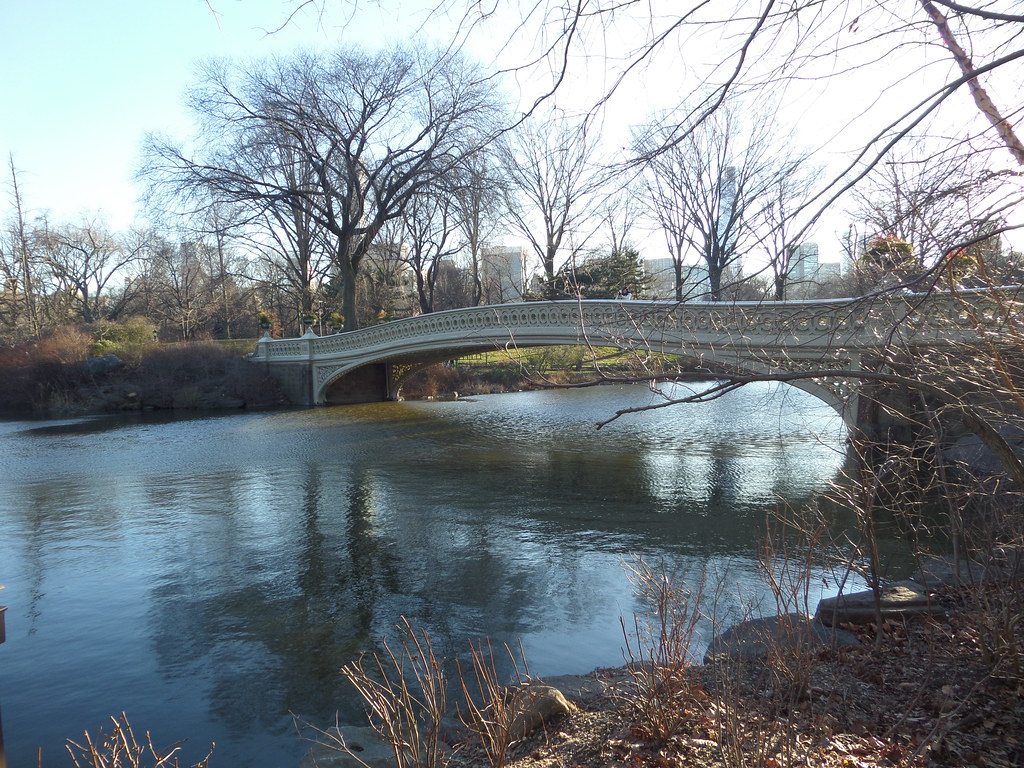
Bow Bridge, Central Park
Bow Bridge connects the Ramble with Cherry Hill, spanning the lake. The bridge was built between 1859 and 1862 and is shaped like an archer’s bow.
View from the top of the Bethesda Terrace
We then moved on to the Bethesda Terrace located in the centre of the park. At its centre stands the Bethesda Fountain also known as the Angel of the Waters. The sculpture looked beautiful but as it was still early in the year the fountain was drained of water.

Bethesda Fountain, Central Park, New York
Flights of stone steps flank the elegant structure known as the Arcade with its exquisite ceiling composed of nearly 16,000 tiles coming together to form 49 geometrically patterned panels. The tiles were manufactured by the Minton tile company in Stoke-on-Trent in England. There are far reaching views across the park and of the city skyline from the upper terrace.
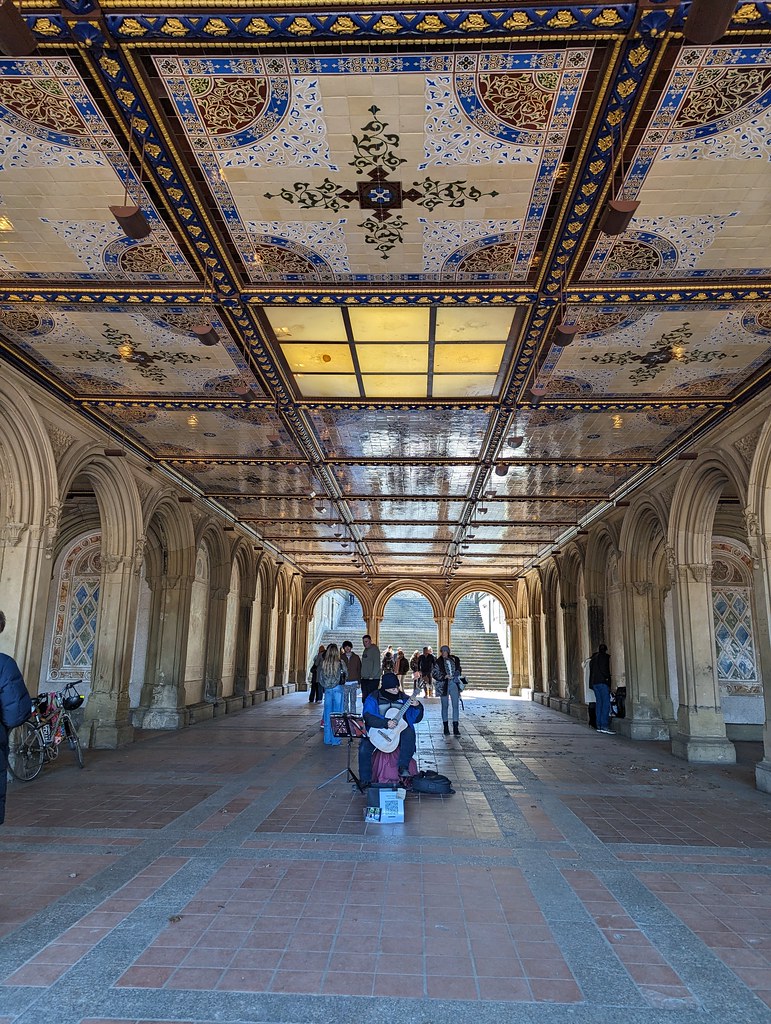
The Arcade, Central Park
From there we continued to The Mall, a tree lined avenue of American Elm trees which in turn leads onto the Literary Walk with its collection of statues of famous writers. We paused to view the bronze statue of the Danish poet and author of fairy tales, Hans Christian Andersen.
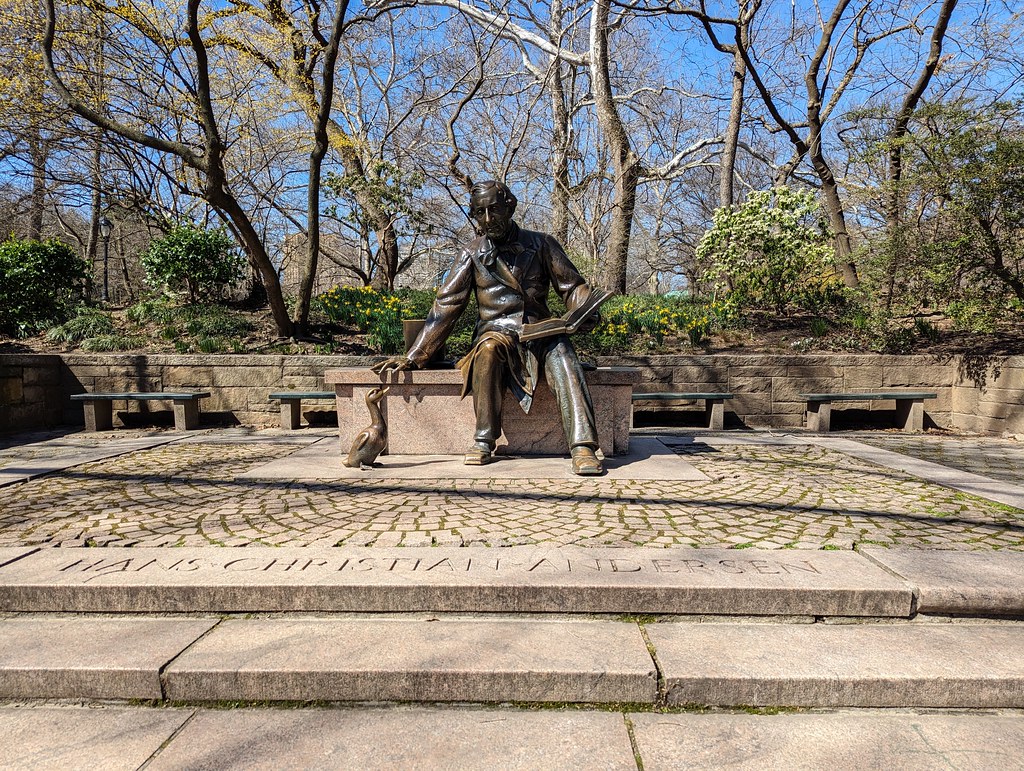
Sculpture of Hans Christian Andersen, Central Park
The sculpture depicts the writer seated on a bench reading the Ugly Duckling to an attentive 2ft high bronze duckling.
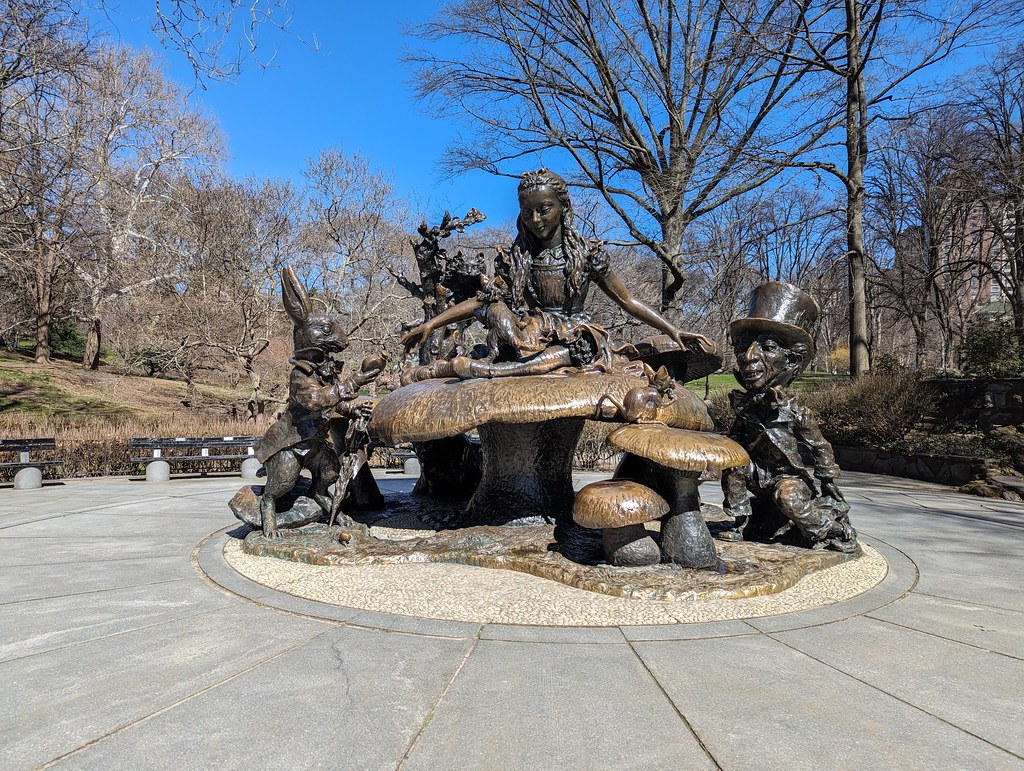
Alice in Wonderland Sculpture, Central Park, New York
Slightly further on we reached the delightful Alice in Wonderland bronze statue surrounded by the Mad Hatter, White Rabbit and some of her other friends. The statue stands 11ft tall and has taken pride of place in the park since 1959, enabling children to experience the wonder of Lewis Carroll’s classic story.
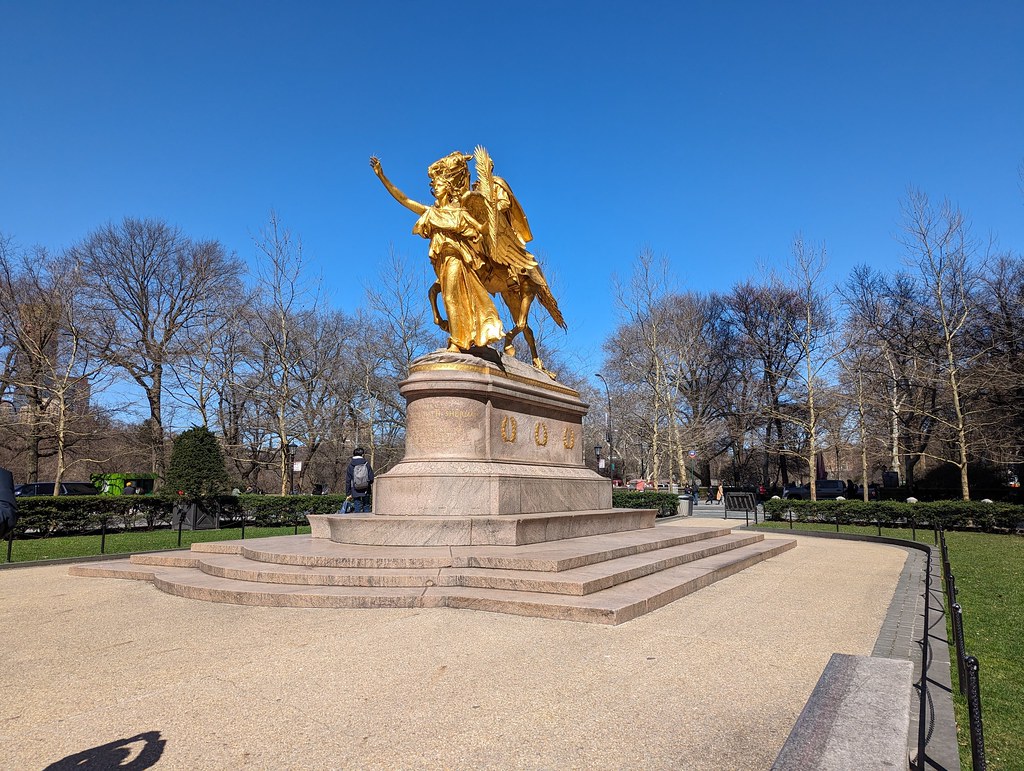
General Sherman Statue, Grand Army Plaza, New York
We left the park at 5th Avenue close to the Grand Army Plaza with its gilded statue of General William Sherman, before continuing along Fifth Avenue glancing in several of the designer ships lining the road. On reaching the 58 storey Trump Tower building we admired its four sided 16ft (4.9m) clock which is mounted in the pavement before wandering into the foyer for a look around.
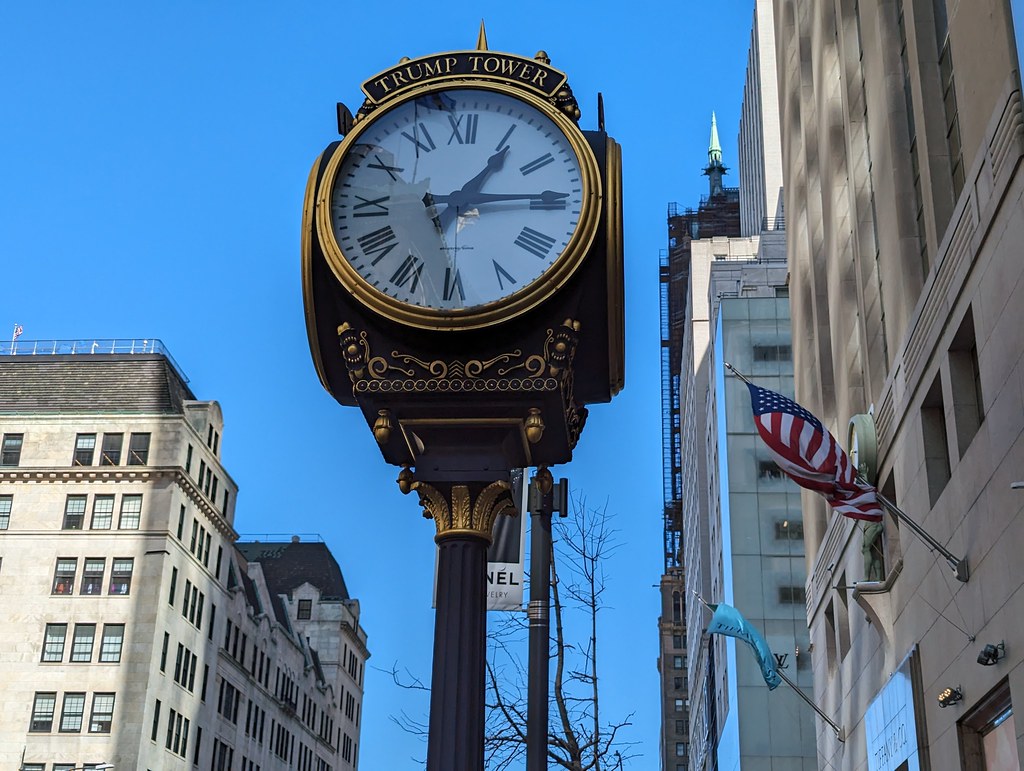
Trump Tower Clock
New York Public Library
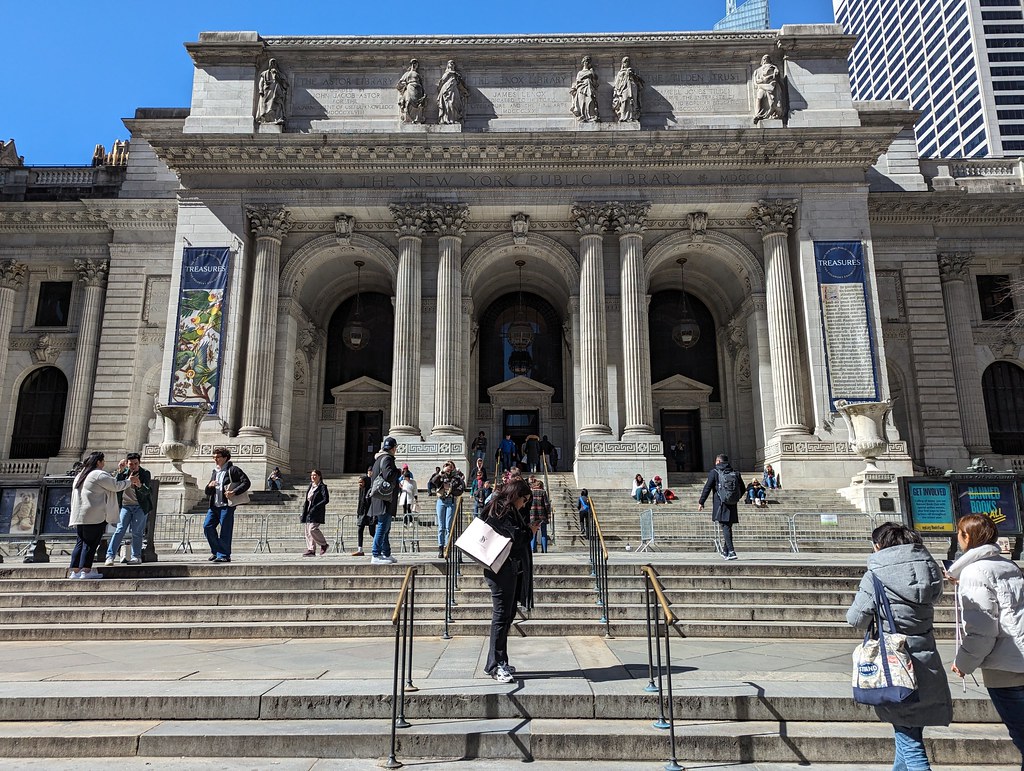
Further along Fifth Avenue at its intersection with 42nd Avenue stands the New York Public Library in Bryant Park. The library has been welcoming visitors since 1911 and its entrance is approached by a flight of stone steps guarded by a pair of lions named Patience and Fortitude.
The library’s bronze entrance doors open into Astor Hall, which leads into special exhibition galleries and a stunning periodicals room. Gottesman Hall houses a permanent exhibition of the library’s treasures featuring over 250 rare and unique items.
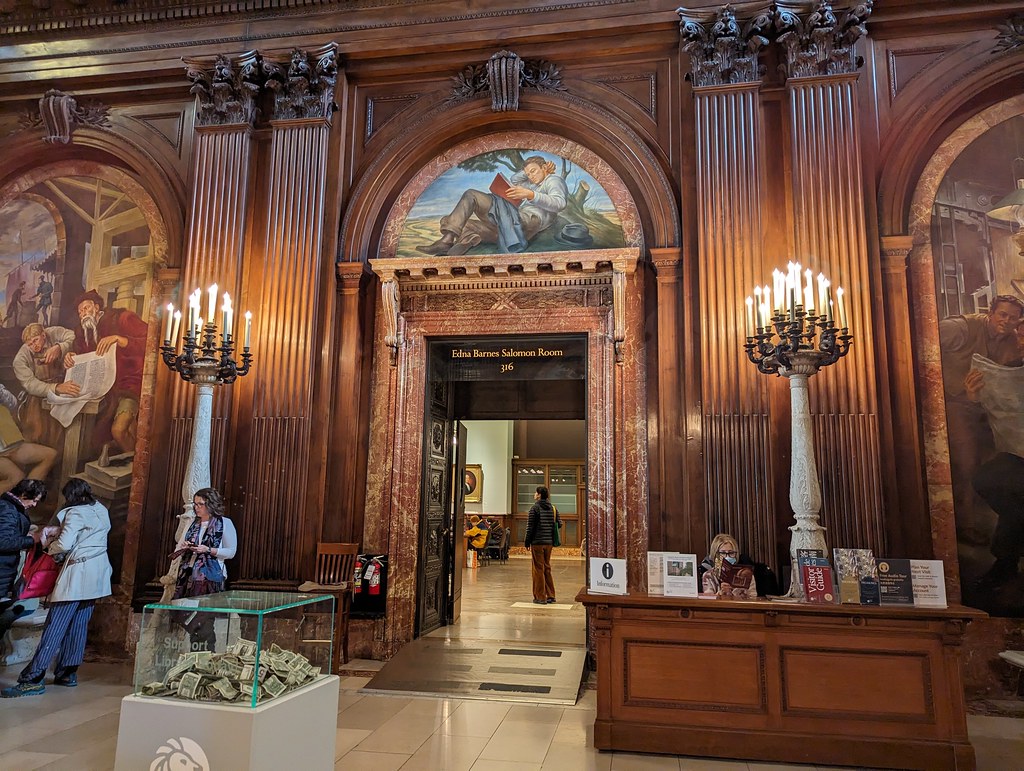
Third Floor, New York Public Library
After looking around the ground floor we climbed the stairs to the balconied landing overlooking the entrance hall before continuing to the third floor with its exquisite McGraw Rotunda. The rectangular room features a barrel vault ceiling, wood panelled walls, free standing candelabras and marble benches. The rotunda serves as an entrance to the historic reading rooms and special collection galleries.
We had hoped to be able to look inside the Rose Main Reading Room but this is only open for private study and research. The library offers 15 minute tours taking place three times daily but as the final one was already fully booked we did not have an opportunity to participate.
Instead we viewed other parts of the library open to the public admiring magnificent painted ceilings, ornate wood panelled staircases, sculptures and intricately carved wooden bookcases.
Grand Central Terminal
Leaving the library it was then just a short stroll to another of New York City’s iconic landmarks, that of Grand Central Terminal located at 89th East 42nd Street / Park Avenue. This beaux-arts railway station was completed in 1913 and I’m yet to find another station quite so beautiful.
The main concourse, Grand Central Terminal
The station was renovated in the 1990’s retaining its original features whilst carefully managing to update the experience for the needs of today. The main concourse is adorned with Tennessee marble floors and Italian marble ticket counters. Glancing up to the magnificent vaulted ceiling, it depicts constellations designed by the French artist Helleu.
Nowadays trains from Grant Central’s underground platforms only serve commuter trains to northern suburbs and Connecticut but if like us you are not planning on travelling anywhere, the station is worthy of a visit for its appearance alone.
Information Kiosk, Grand Central Terminal
Splendid views of the concourse can be had from the upper balcony where you will also find an Apple Store, whilst the basement boasts a vast food hall and central market with an array of food outlets ranging from restaurants to bakeries and an oyster bar.
9/11 Memorial Museum
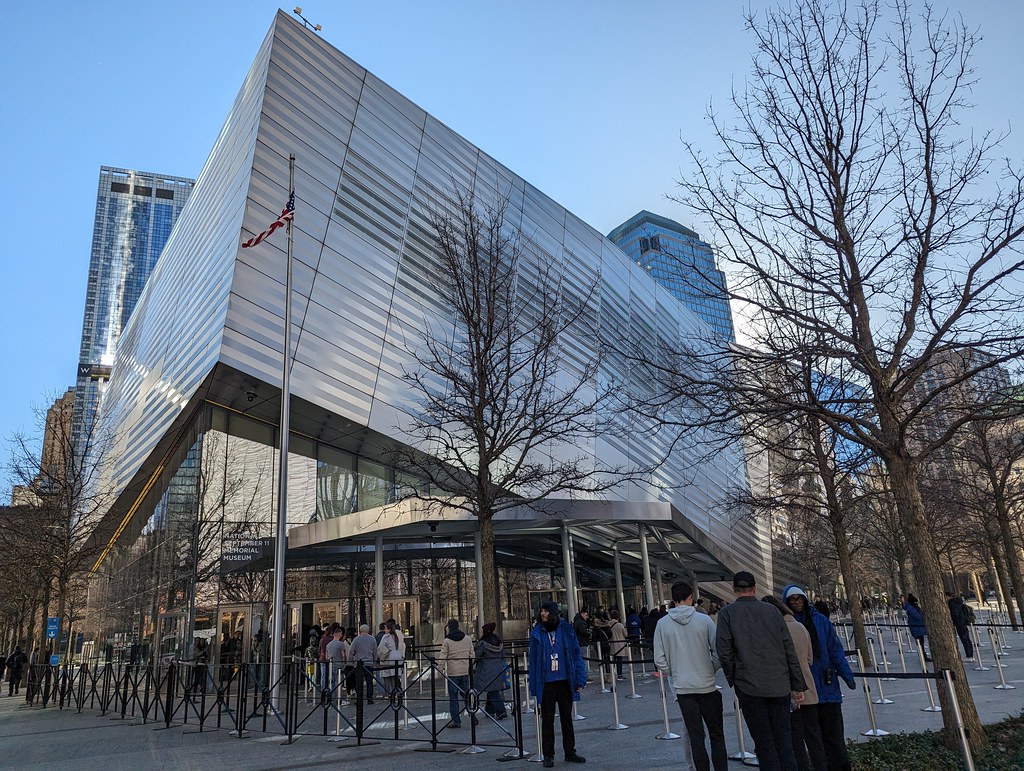
On leaving the station we caught a bus to the World Trade Center for a timed entry visit to the 9/11 Memorial Museum. Standard entrance to the museum is $33 (£26.26) and also included in the New York CityPASS as mentioned above.
Sunken Pool, 9/11 Memorial, New York City
On the previous day we had come to pay our respects to the victims of the terrorist attacks around the two sunken pools that have been positioned in the footprints of the Twin Towers so it was only fitting that we should return to visit the museum as well. An urban forest of 400 swamp trees surround the pools creating an oasis of calm and sober reflection leading to the museum’s entrance on Greenwich Street just across from the Oculus.
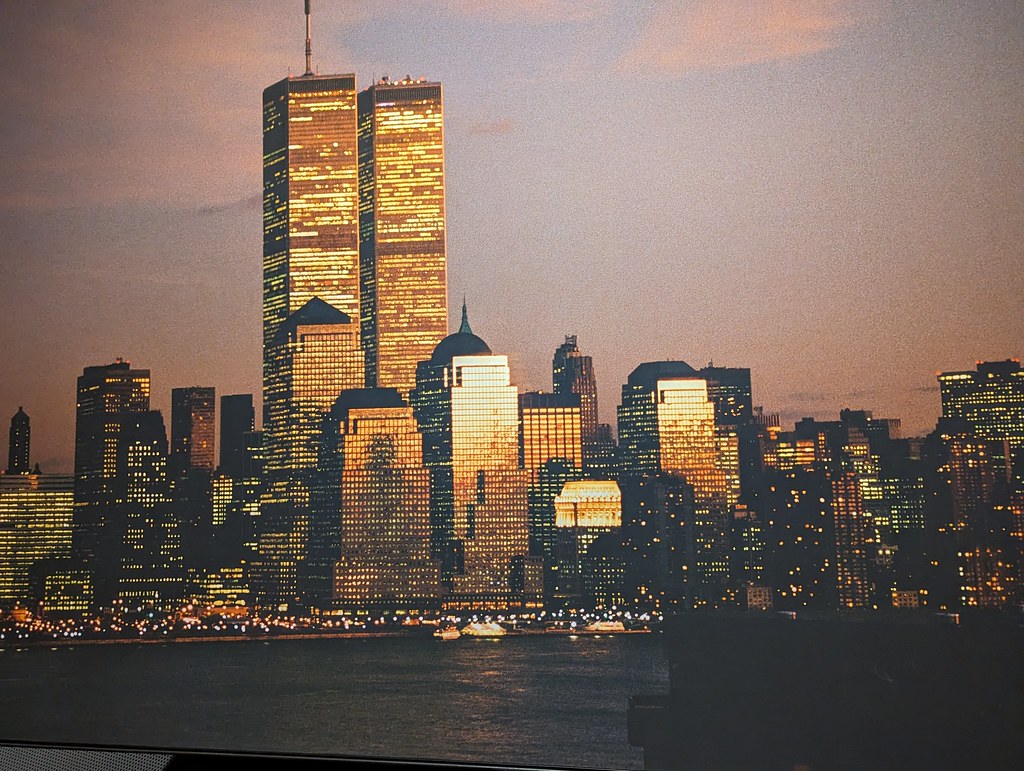
Picture of the Twin Towers in the 9/11 Museum, New York
The 9/11 museum has received more than 1.8m visitors since its opening in 2014. Its vision is to educate its visitors about the attacks of September 11th 2001 and of February 26th 1993. The museum is divided into three main exhibition areas, all of which are located 70ft underground.
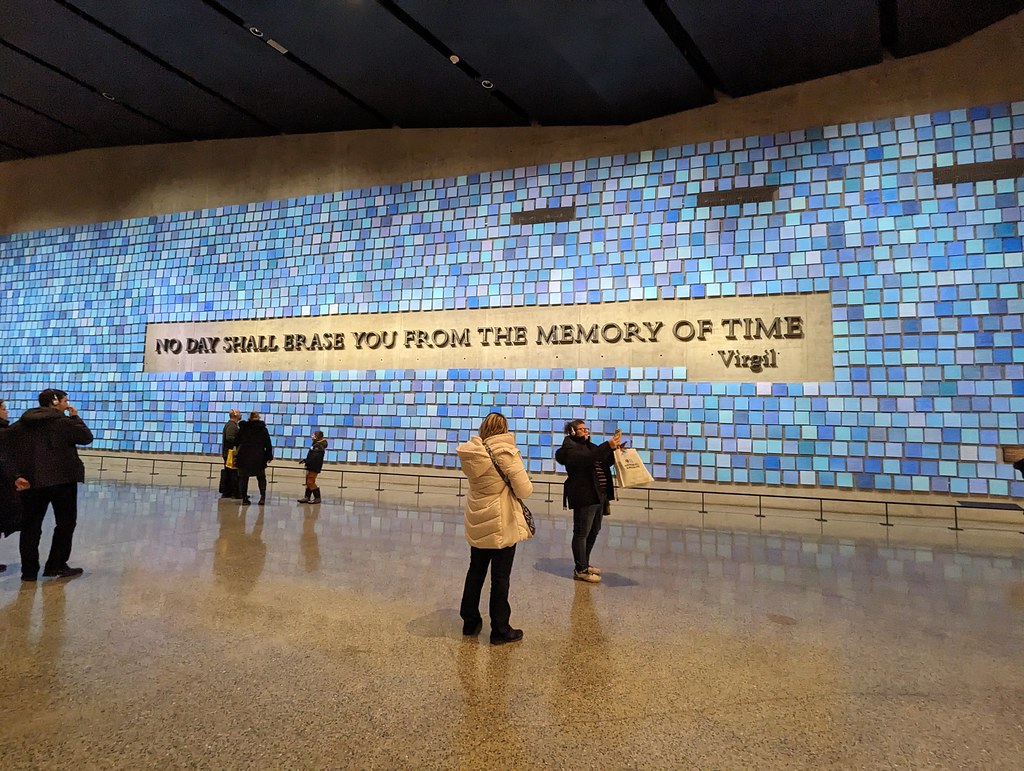
A different shade of blue tile for all victims of the terror attacks
We explored the background to the attacks, how the day unfolded and the aftermath. Continuing, we learnt about some of the victims and viewed photographs of almost 3,000 men, women and children who were killed in the attacks.
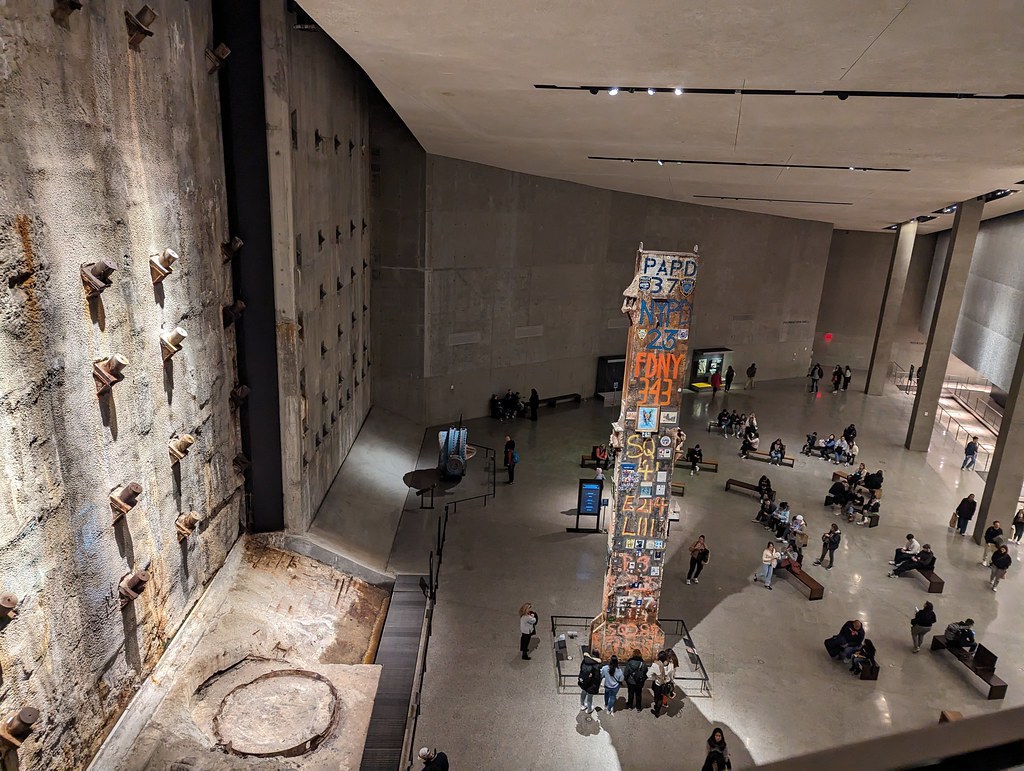
Retaining Wall and Last Column, 9/11 Museum, New York
We viewed a ‘slurry wall’ which was a surviving retaining wall of the original World Trade Center and the 36ft high ‘Last Column’ covered with mementos, memorial inscriptions and missing persons posters. Over 74,000 remnants of the attacks are on display ranging from a heavily damaged staircase and a burnt out fire engine to small, personal items including rings, wallets and passports.
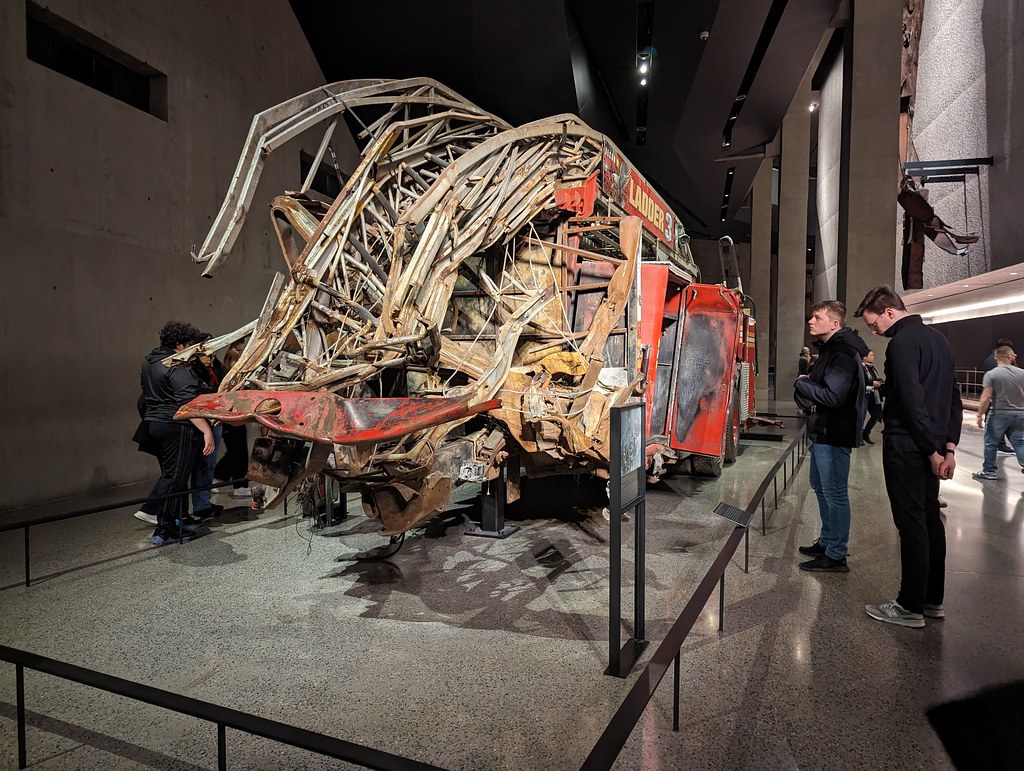
A burnt out fire engine on display
It’s unusual to visit a museum focussing on events within our own life time and I’m certain that almost everyone who was alive on that fateful day with be able to instantly recall where and what they were doing when the attacks happened. It’s hard to put such devastation and sadness into words but I do feel that the galleries have been carefully curated relating the events of 9/11 and it brought tears to our eyes reliving the day and its aftermath.

